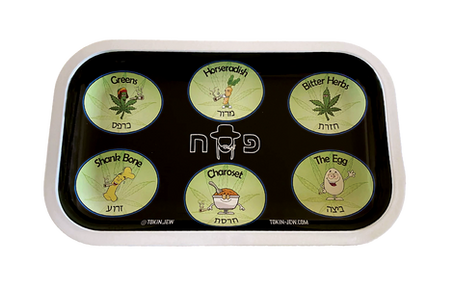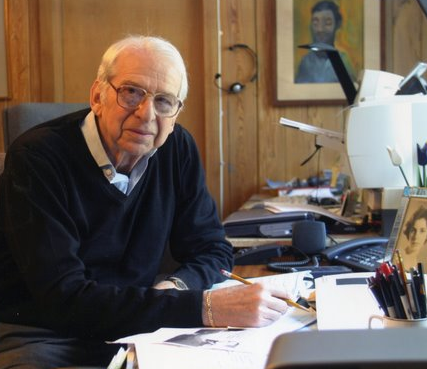KOSHER KUSH
- Bobby Black
- May 31, 2022
- 6 min read
Highlighting the history of Jews and cannabis.

It’s well established that, for millennia, cannabis has been used as food and fiber, as well as for medicinal and sacramental purposes by many ancient cultures … but would it surprise you to know that the Hebrews were among them?
Now, a new exhibit at New York City’s YIVO Institute for Jewish Research is showcasing the age-old relationship between the Chosen People and their apparent drug of choice. Titled “Am Yisrael High: The Story of Jews and Cannabis,” the exhibit contains a number of contemporary items – including a shofar pipe, a Yiddish translation of the book Hashish, and a menorah bong by Grav Labs, which curator Eddy Portnoy says served as the inspiration for the exhibit.


It also features a sampling of documents from the Cairo Geniza: a collection of around 400,000 Jewish manuscript fragments discovered in the Ben Ezra Synagogue in Old Cairo in the 1800s. Among the gems found in this treasure trove of material are song lyrics about a Jew high on hashish and wine with a severe case of the munchies, and a “purchase order” for hashish in exchange for silver dating from the 13th century CE.
TEXTS & TEXTILES
But these are hardly the only references to cannabis in ancient Hebrew texts. The Talmud (the primary source of Jewish religious law) discusses growing hemp and how it should be kept separate from other crops. There are also references to Jews using hemp textiles to make religious garments such as tallitot (prayer shawls), tzitzit (knotted fringes or tassels), and even burial shrouds.
“It’s most prominent in clothing and is considered to have a form of spiritual protection, so it was used very commonly in burying the dead in Israel,” says Rabbi Yosef Glassman, MD, who spoke at the exhibit’s opening. “It’s believed that when there’s resurrection of the dead in the future, people will be wearing cannabis clothing.”
Hemp was often used to build Schach (Sukkah roofs), and in the Shulchan Aruch (Code of Jewish Law), it’s also recommended as the preferred material for wicks in Shabbat lamps and candles.

KANEH BOSEM
There are also several places in the Tanakh (Hebrew Bible) that refer to a spice called kaneh bosem, which may or may not be cannabis. The Aramaic term (also referred to as kanabos) appears five times in the Old Testament – most significantly in Exodus, where God lists it among the five spices in the recipe for holy anointing oil he dictates to Moses. Historically, most sources have translated kaneh bosem as “sweet cane” – a vague description that makes identifying it difficult. Some scholars have interpreted it to be calamus, while others even believe its identity was purposely kept a secret because it was so sacred.

Despite the similarity in phonetics, it wasn’t until 1936 that a Polish etymologist named Dr. Sula Benet first put forth the theory that kaneh bosem might in fact be cannabis. In her paper “Early Diffusion and Folk Uses of Hemp,” Benet argued that, after analyzing numerous ancient texts and comparative etymologies, she was convinced that the term had been mistranslated – explaining that the root “kan” actually translated to “hemp” and bosem meant “aromatic.”
If Benet’s theory were correct, it would mean that ancient Jews not only used Cannabis as a textile but also in their religious ceremonies – a hypothesis recently borne out by archeological evidence.

TEL ARAD TEMPLE
In May 2020, the academic journal of Tel Aviv University’s Institute of Archaeology published an article revealing that cannabis residue had been discovered on one of two altars in the 2,700-year-old Judean temple known as Tel Arad (located in the Negev Desert about 59 miles south of Tel Aviv). The two limestone altars, which contained traces of burnt offerings, were located at the entrance of the temple’s inner sanctum – also known as the “holy of holies.”
The larger of the two altars contained remnants of frankincense, while the smaller was found to contain traces of cannabis resin (including cannabinoids THC, CBD, and CBN) and animal dung, which archeologists believe was likely used to heat the hashish. Researchers also noted that since cannabis wasn’t typically utilized for its fragrance, it was almost certainly burned for its psychotropic effects.
“It seems likely that cannabis was used at Arad as a deliberate psychoactive, to stimulate ecstasy as part of cultic ceremonies,” they wrote. “If so, this is the first such evidence in the cult of Judah.”
MEDICAL USE & THE MIDDLE AGES
There’s ample evidence that Jews continued to use cannabis spiritually and medicinally throughout antiquity and the Middle Ages.
In 1992, an archaeological dig in a cave at Beit Shemesh (about 35 miles west of Jerusalem) uncovered evidence of hashish in the stomach of the 1,623-year-old remains of a 14-year-old girl who was nine months pregnant – leading researchers to conclude it had likely been used as an anesthetic during childbirth as early as the 4th century CE.


In the 12th century, Maimonides – the most influential Jewish scholar/physician of the Middle Ages – recommended using cannabis oil for colds, headaches, respiratory problems, and clogged ears. In the 13th century, a Kabbalistic grimoire called the Sefer Raziel suggested cannabis as a preventative for keeping demons away. And in the 16th century, the chief rabbi of Cairo, Rabbi ben Solomon ibn Abi Zimra, stated that the “leaves of cannabis make one happy.”

And then there’s Rabbi Israel ben Eliezer (aka Baal Shem Tov), who founded the Hasidic sect in the 18th century. A mystic and kabbalist whose teachings emphasized the importance of joy and direct connection with God, Eliezer was reported to “pray ecstatically,” make medicines from wild grasses and barks, and smoke from a water pipe which he claimed produced aliyat neshama (ascension of the soul). In fact, his biographer once said, “he would give his entire portion in this world, and in the world to come, just for a taste of what the Ba’al Shem Tov got from his pipe.”
MOROCCAN MERCHANTS
Though it’s always been claimed it was tobacco that Eliezer was smoking, it’s certainly possible there was some hashish sprinkled in. After all, Jews were among the biggest tobacco and hash merchants in the Middle East at the time. When Morocco became one of the world’s largest producers of hashish in the 17th century, it was the Jews who brokered most of the export deals between the farmers in the Rif Mountains and the Arabic-speaking city dwellers.
“The Jews, in general, did not grow cannabis … but they received a monopoly from the king for the sale of tobacco in Morocco, and that included sales of the cannabis plant and the hashish produced from it,” explained Moroccan Jewry expert Dr. Doron Danino in a 2019 interview with the Times of Israel. “Jews used to speak several languages, and they had a business sense, which made it a mutually beneficial partnership.”
According to Dr. Danino, some Jews were even sprinkling hash into their shakshuka dal-ashubh — a couscous dish served as part of their preparation for celebrations and events.
FROM RABBIS TO RADICALS
During the rise of America’s counterculture, Jews were consistently at the forefront of cannabis activism. Jazz musician Mezz Mezzrow, aka the "Muggles King," was Louis Armstrong’s reefer dealer and one of the plant’s earliest public advocates. It was allegedly Mezzrow who first turned on beatnik icon Allen Ginsberg, who later co-founded America’s first marijuana legalization advocacy group LeMar in 1964 and led the first pro-marijuana march in New York’s Lower East Side.
Ginsberg, in turn, helped mentor The Yippies in the late ’60s, many of whose prominent members (Abbie Hoffman, Jerry Rubin, Paul Krassner, A.J. Weberman, and Aron “Pie Man” Kay) were also of Jewish heritage. Even President Richard Nixon acknowledged the connection between Jews and cannabis in his infamous 1971 racist Oval Office recording:
“You know, it’s a funny thing, every one of the bastards that are out for legalizing marijuana are Jewish.”
In addition to activism, Jews have also led the way in cannabis science via Israeli scientist Dr. Raphael Mechoulam – considered the “father of cannabis research” for discovering THC, CBD, and the endocannabinoid system in the 1960s – as well as the “godfather of medical marijuana,” Harvard professor/psychiatrist Dr. Lester Grinspoon.
Other prominent Jewish marijuana advocates have included The Emperor Wears No Clothes author Jack Herer, grow guru Ed Rosenthal, and Drug Policy Alliance founder Ethan Nadelmann, among many others.


MODERN MITZVAH
So, where does Jewish religious leadership stand on cannabis in the modern age? Though it was declared forbidden under Jewish law by Rabbi Moshe Feinstein in 1973, that stance has since softened significantly. In 2013, Rabbi Efraim Zalmanovich stated that cannabis was permitted for medical use, and three years later, Rabbi Chaim Kanievsky ruled that it could be consumed during Passover. Since then, several brands have been certified as Kosher by the Orthodox Union, including Vireo, Mitzvah Herbal, and Mazel Tov Farms (who co-sponsored the YIVO exhibit).

“There is no question that the plant has a holy source, God himself,” says Glassman. “Marijuana usage…is an aspect of Jewish law and tradition that had long been buried, and one that deserves resurfacing and exploration.”




































